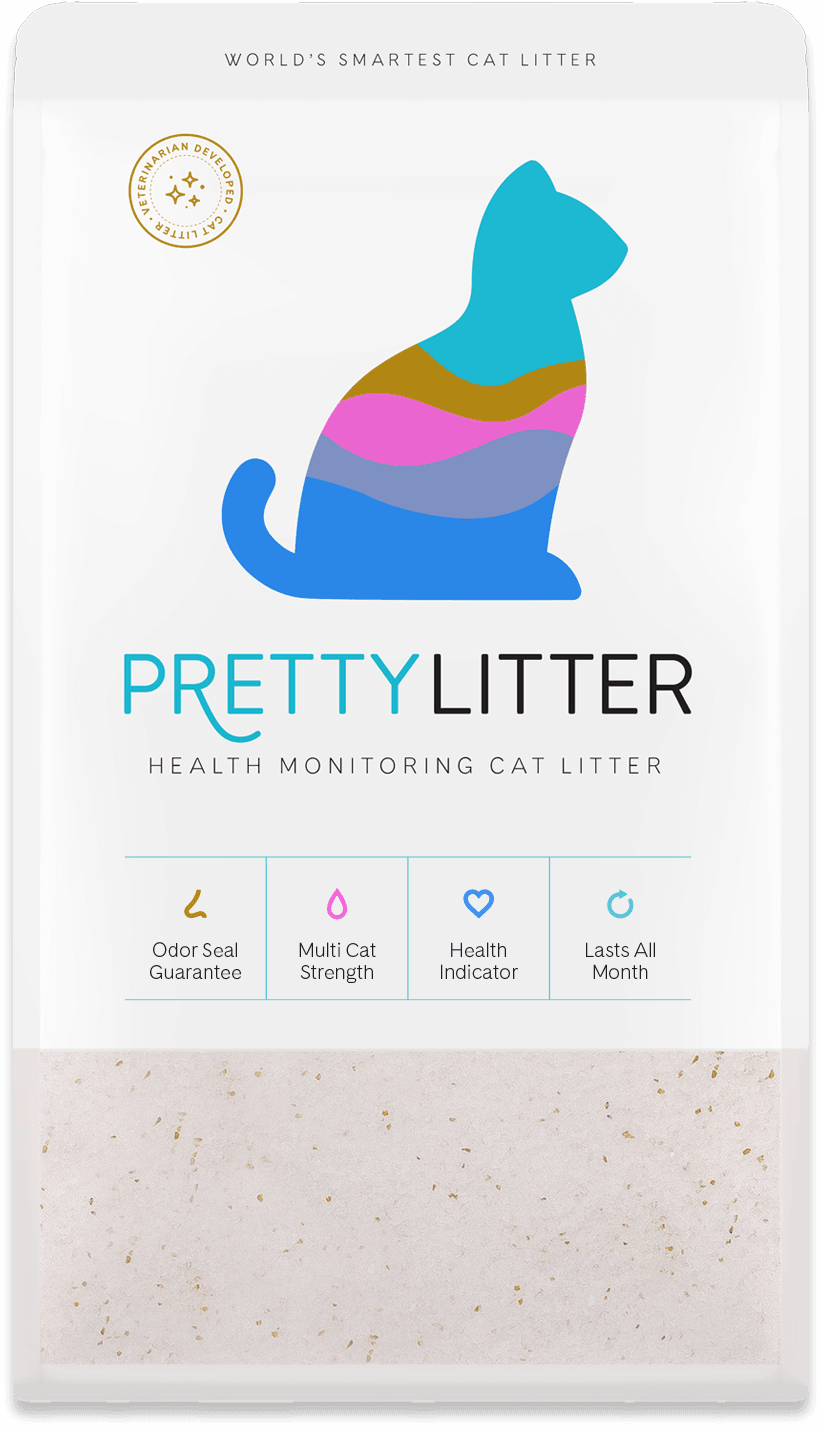October 28, 2025 |9 min read
Feline Grimace Scale: What to Look For

Written by

Cats have a way of communicating that goes far beyond meows, tail flicks, and purrs. In fact, some of the most telling signs of how your cat feels are written all over their face, if you know how to read them. The feline grimace scale (FGS) is a powerful tool designed to help veterinarians and cat parents recognize when their feline friend might be in pain.
For many cat owners, it can be hard to tell when something’s wrong. Cats are famously stoic masters of hiding discomfort and pretending everything’s fine, even when it’s not. But subtle clues can speak volumes. In practice, the cat grimace scale helps decode those quiet cues so you can respond with care before an issue becomes serious.
What Is the Feline Grimace Scale (FGS)?
Developed by veterinary researchers, the feline grimace scale is a scientifically validated method for assessing pain in cats by observing their facial expressions. It’s based on the fact that, just like humans, cats involuntarily change their expressions when they’re hurting: their ears shift, their eyes narrow, and their whiskers pull back.
Veterinarians use the scale to measure the acute pain cats experience and to guide treatment, especially after surgery or during recovery from an illness. But cat parents can use it, too. By learning to recognize these subtle expressions, you can catch early signs that your cat might need extra comfort or even a vet visit.
Imagine your cat lounging in their favorite sunspot. Normally, their eyes are soft, their ears perked just so, and their whiskers relaxed. But one day, you notice their eyes look more squinted, their ears seem tilted slightly outward, and their muzzle appears tense. That could be your cat’s way of saying that something hurts.
This is where FGS scores become more than just a veterinary term as a way for you to tune in to your cat’s unspoken language.
Cat Litter That Prioritizes Their
Health & Your Happiness.
to get your first bag for only $14.99
5 Key Facial Expressions to Watch Out For
The feline grimace scale focuses on five main facial areas: the ears, eyes, muzzle, whiskers, and head position. Each of these features tells part of the story. Let’s take a closer look at how to read them.
1. Ear Positioning: The Mood Barometer
Ears are like a cat’s emotional antennae. When your cat is happy and relaxed, their ears usually stand upright or tilt slightly forward, indicating alertness, curiosity, and calmness. But when they’re in pain, their ears tend to flatten or angle outward to the sides, almost like tiny airplane wings.
This subtle shift might not seem dramatic, but it’s often one of the first indicators of discomfort. The more the ears rotate away from their normal forward position, the higher the potential pain score on the cat grimace scale.
So next time your cat’s ears aren’t where you expect them to be, take a moment to observe the rest of their expression. You might be catching an early whisper of distress.
2. Eyes: The Windows to Pain
Your cat’s eyes can say what words can’t. On the FGS, squinted or tightly closed eyes can be a major red flag for pain. When a cat feels good, their eyes are open, soft, and curious. But pain can cause tension in the facial muscles that makes their eyes narrow, almost as if they’re grimacing.
That subtle squint is a protective reaction, a cat’s instinctive way to shield themselves from further discomfort. And sometimes, it’s easy to miss.
The key is context. Maybe your cat’s just waking up from a nap or lounging under dim light. Both are normal times for eyes to appear half-closed. But if the squinting happens alongside other changes like drooping ears or whiskers pulled back, that’s when it’s time to take a closer look.
3. Whiskers: The Unsung Storytellers
Cat whiskers are deeply connected to your cat’s nervous system, acting as tiny sensors that help them navigate and interpret their environment. When a cat is relaxed, whiskers naturally fan out to the sides.
However, on the cat grimace scale, whiskers drawn backward and closer to the face can signal discomfort or tension. It’s a protective posture, as if your cat is pulling inward to guard themselves.
Next time you’re scratching under your cat’s chin, notice where their whiskers sit. Over time, you’ll start recognizing their “happy” versus “something’s off” look almost instantly.
4. Muzzle and Mouth Tension: The Quiet Clue
A cat’s muzzle (that soft, rounded area around the nose and mouth) can also change shape depending on their mood and comfort level. When relaxed, the muzzle looks full and rounded. But when pain sets in, it may tighten, flatten, or appear pinched.
The FGS takes this into account, noting that a tense or drawn muzzle often pairs with other signs of discomfort, such as drooping whiskers or half-closed eyes.
It’s important to remember that no single feature tells the full story. The cat facial expressions used in the FGS are meant to be interpreted together to paint a complete picture of how your cat feels in the moment.
5. Head Position: The Final Hint
Lastly, take note of your cat’s head posture. Cats in pain often lower their heads or tuck their chins closer to their chest. It’s a subtle way of conserving energy and self-soothing. In contrast, a happy cat usually keeps their head up and moves it freely as they explore their surroundings. This detail may seem small, but when combined with other facial cues, it completes the map of feline emotions.
Supporting Your Cat’s Comfort
Caring for your cat means tuning in to the tiny things, but sometimes, the clues aren’t visible at all. That’s where a health-monitoring cat litter can help fill in the gaps.
When your cat uses PrettyLitter, the crystals react to the pH level of their urine, providing you with valuable insights into their health before symptoms become apparent. It’s not a diagnosis, but it’s an early warning system that helps you take action sooner rather than later.
If the litter color changes outside of dark yellow or olive green, then it’s your cue to monitor the color for the next 48 hours and possibly check in with your vet. Combined with the FGS, you’re essentially decoding two parts of your cat’s wellbeing: how they look on the outside and what might be happening on the inside.
The Importance of Vet Care and At-Home Monitoring
If your cat’s litter changes color or their cat facial expressions suggest they’re in pain, don’t wait it out. A quick vet visit can rule out issues or catch something early.
Between appointments, keep an eye on their body language and routines. Is your cat not eating? Spending more time in their favorite hiding spot? Grooming less than usual? These subtle shifts can reveal a great deal.

Protect Your Cat from Pain with PrettyLitter
At the heart of the feline grimace scale lies a simple truth: love means paying attention. You don’t need a degree in veterinary medicine to notice when your cat’s whiskers pull back or their eyes lose that familiar sparkle. You just need time, observation, and a willingness to learn their language.
And when you pair those observations with smart tools like PrettyLitter, you’re taking an active role in protecting your cat’s well-being. At the end of the day, your cat might not be able to tell you they’re in pain. But between a knowing glance, a color change in the litter box, and your intuition, you’ll know.
Sources:
- The Veterinary Journal. Understanding the Feline Grimace Scale: A study of dimensional structure, importance of each action unit and variables affecting assessment. https://www.sciencedirect.com/science/article/pii/S1090023325001522
- Journal of Feline Medicine and Surgery. Pain management in cats—past, present and future. Part 1. The cat is unique. https://pmc.ncbi.nlm.nih.gov/articles/PMC10822206/Science Direct. Understanding the Feline Grimace Scale: A study of dimensional structure, importance of each action unit and variables affecting assessment. https://www.sciencedirect.com/science/article/pii/S1090023325001522







